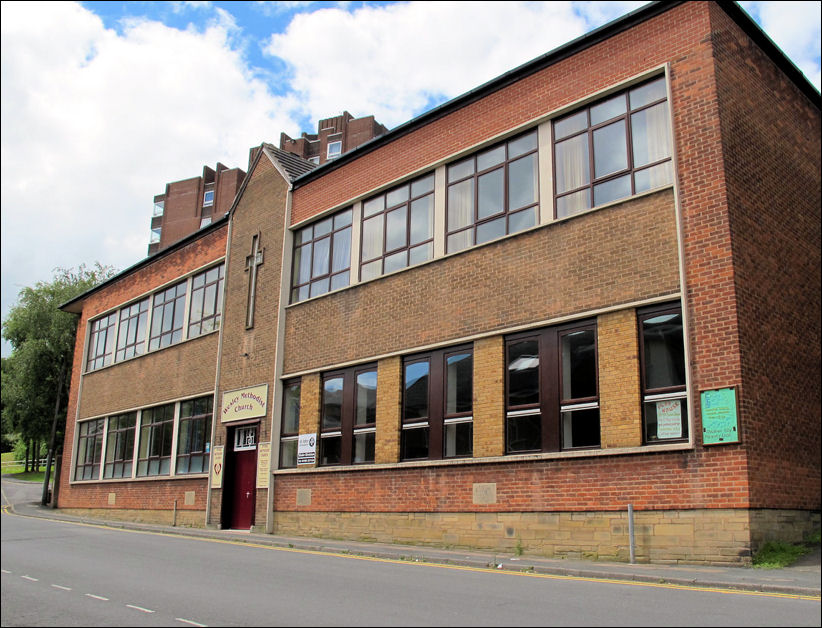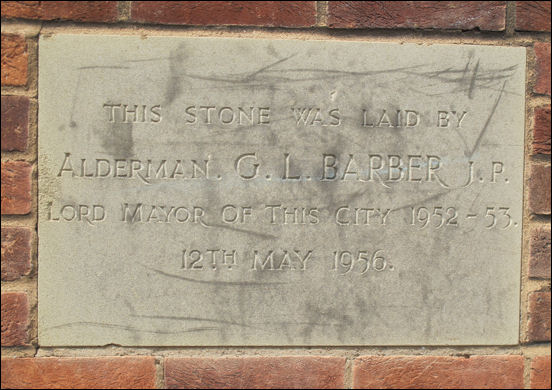|
|
|
![]() back to "The Grand Tour" index
back to "The Grand Tour" index
Neville Malkin's "Grand Tour" of the Potteries
buildings in Stoke
![]()
![]()
![]()
next: The Hide Market, Stoke
previous: Stoke School of Art
contents: index of buildings in Stoke
|
No 91 - Old
Methodist Chapel, Stoke
© The Potteries Museum
& Art Gallery
|

The Old Methodist Chapel, on
the corner of Epworth Street and Hide
Street, Stoke
pen drawing by Neville Malkin - July
1976
[demolished sometime after 1985 and replaced with a new church in 1956]

The New Methodist Chapel, on
Epworth Street - built in 1956
photo: June 2011

This stone was laid by
Alderman G. L. BARBER J.P.
Lord Mayor of this City 1952-53
12th May 1956
|
"The Old Methodist Chapel in Hide Street is one of the oldest buildings in Stoke. It was built in 1806, with accommodation for 1,000, and remains to this day almost unaltered. Incredibly, only 40 years before the building of this chapel, Stoke was just a small village in the united township of Penkhull and Boothen; it consisted of only five or six houses near to the church, the old hall, and the curate's house. During the latter part of the 18th century, and in a very short time, many enterprising manufacturers settled in the town and extensive building took place.
Concurrent with the rapidly-developing industrial scene was a population explosion, and the building of rows of terraced houses, shops, offices, inns, and other amenities in the centre of Stoke. By the turn of the century, extensive wharfs for receiving and forwarding goods by canal had been built, and a tramway for horse-drawn traffic lain to Longton in 1815; it operated from a wharf and basin on the east side of town, where large warehouses had been erected. Firms such as Pickfords introduced regular services to and from Stafford railway station after the opening of the Grand Junction Railway in 1837. There was a steam cornmill containing four pairs of stones, which was the largest flourmill in the district. Then there was the gasworks, opened in 1840, which supplied the factories, inns and houses. It is only possible to mention a few of the many places of worship established in the town: St. Peters must take pride of place, having origins in the distant past, probably during the 8th century. The Wesleyan chapel of 1806 is the oldest extant place of worship, followed by the Methodist New Connexion in Hill Street, built in 1815. The Quakers had a small meeting house in Chapel Street which they bought from the Independents, who had built it in 1823." |
![]()
![]()
![]()
next: The Hide Market, Stoke
previous: Stoke School of Art
contents: index of buildings in Stoke
|
Related Pages Stoke - one of the six towns of The Potteries external links.. Staffordshire Past-Track
|